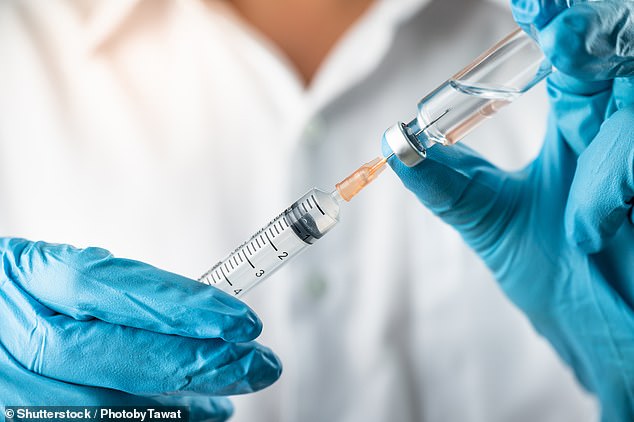Octopus-like sucker may mean the end of many jabs for diseases such as obesity and breast cancer
- Sticky devices inspired by octopus tentacles could mean an end to injections
Sticky devices inspired by octopus tentacles could mean the end of injections for millions of people.
The patches have small rubber suction cups and are designed to be stuck to the inside of the cheek, where they deliver insulin and other drugs for things like obesity and breast cancer, which are normally given by injection.
The patches, which are the shape and size of a bean, could be a boon for people whose medications are not available in pill form, as well as for those with a needle phobia.
Many new medications need to be injected because they are made of proteins that would be broken down by the enzymes in the digestive tract if taken in tablet form. These ‘large molecular’ medicines are also often poorly absorbed into the blood when taken in the form of pills. By delivering them through the cheek, they enter the bloodstream directly.
Researchers have previously tried delivering drugs through patches placed in the mouth, but had difficulty getting them to stick to wet cheeks.
Sticky devices inspired by octopus tentacles could mean the end of injections for millions of people (Stock Image)
Swiss scientists looked to octopuses and their suckers for inspiration. When the octopus’s sucker comes into contact with its prey, the sucker flattens, creating a watertight seal that holds it firmly in place. The drug delivery patch consists of a suction cup, topped with a small dome, which holds the drug, and a compound that increases the permeability of the cheek tissue.
To apply it, the patient presses it against the soft, smooth surface of the inside of the cheek. This creates a vacuum that prevents it from slipping.
The suction cup then temporarily stretches the mucous membrane of the cheek, creating a larger area through which the medication can be absorbed: the medication then seeps out and onto the mucous membrane of the cheek, where it is then absorbed into the bloodstream.
The patches, which measure 1cm by 0.6cm, are used once before being thrown away and a new one applied if necessary.

The patches have small rubber suction cups and are designed to be stuck to the inside of the cheek, where they deliver insulin and other drugs for obesity and breast cancer, for example, that are normally given by injection (Stock Image)
In tests on dogs, which have a similar cheek lining to humans, the patches successfully delivered medications, including the diabetes and weight-loss drug semaglutide (usually injected), into the bloodstream.
The researchers from ETH University in Zurich then asked 40 healthy people to wear the patches for half an hour. The patches, which contain water instead of medicine, stuck well and only one participant said it felt uncomfortable. Most said they preferred it to injections, the journal Science Translational Medicine reported.
“It is a method of drug delivery that could spare millions of people the fear and pain associated with injections,” said Dr. Nevena Paunović, one of the researchers.
Further human trials are planned. Commenting on the new technique, James Birchall, professor of pharmaceutical sciences at Cardiff University, said: ‘The inside of the cheek is less of a barrier than the skin on the outside of the body and is therefore potentially well suited for effective and convenient delivery of medicines.
‘This method avoids the pain of injection and the need for a trained doctor to administer the shot – and delivers the drug directly into the blood vessels so it is not damaged by stomach acid and enzymes.’
